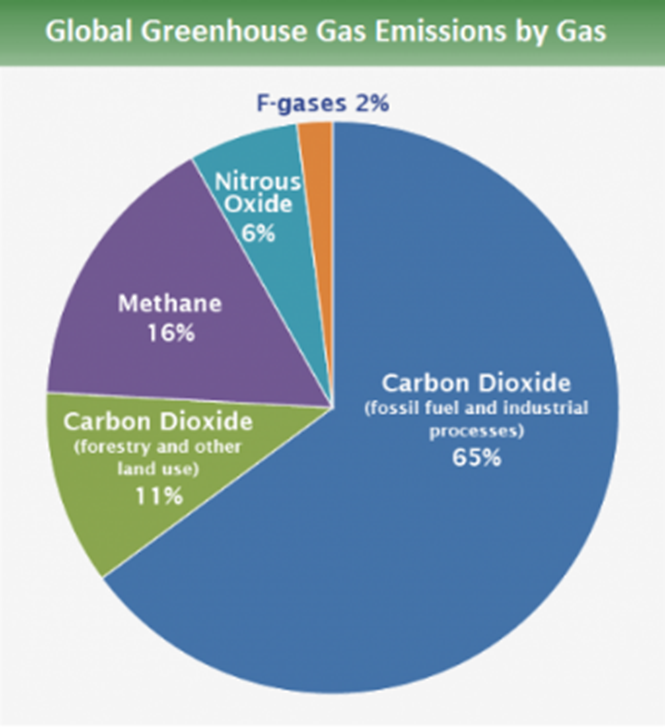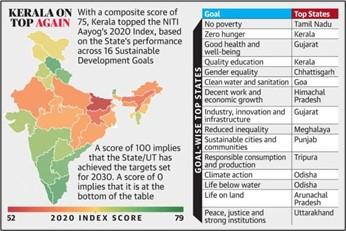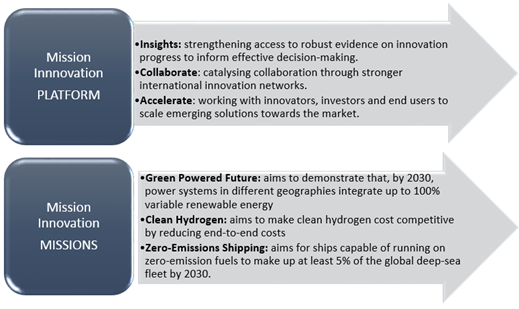Tuesday, 8th June 2021
State of India’s Environment 2021: In Figures
In News
The Centre for Science and Environment (CSE) released the report titled State of India’s Environment 2021: In Figures.
About the report
- It is an annual compendium of data and statistics on key issues of environment and development.
- The report covers a wide range of subjects, from air pollution and climate change to biodiversity and COVID, and from agriculture and land to water and waste.
Key Findings of the Report
- Pandemic Pointers
- Major global economic threat: Along with climate-related risks, infectious diseases have entered the list of major global economic threats for the first time since 2006.
- Rural India worst hit: In the second wave, India has been the worst-hit globally; rural India has been hit more badly than our urban areas.
- Biomedical waste: There has been a 46% increase in COVID-19 biomedical waste between April and May 2021. At the same time, treatment of this waste has dipped: In 2019, India managed to treat 88% of its biomedical waste — down from almost 93% in 2017.
- Economic impact: While urban unemployment rate reached almost 15% in May 2021, the Mahatma Gandhi National Rural Employment Guarantee Act (MGNREGA) implementation witnessed massive payment lags.
- Climate change
- India recorded 12 of its 15 warmest years in the period between 2006 and 2020: it also had its warmest decade on record.
- Extreme weather events continued their rampage across the country, making India the fourth worst hit in the world in terms of internal displacements due to disasters.
- In 2020, 76% of internal displacements in the world were triggered by climate disasters. Between 2008 and 2020, some 3.73 million people per year were displaced because of floods, earthquakes, cyclones and droughts.
- India’s response seems to be lagging. For instance, with just 55% of the target met, India is not close to installing 175 GW of renewable capacity by 2022. The country also has a target of setting up at least 50 solar parks by 2021-22. So far, it has not operationalised even one of them.
- Biodiversity
- India has lost 90% of the area under its four biodiversity hotspots. The Indo-Burma hotspot is the worst hit - the extent of vegetation loss in the region is staggering 95%.
- More than 12% of India’s IUCN Red List animal species are endangered.
- 16 states – including Odisha, Madhya Pradesh, Chhattisgarh and Uttarakhand – have witnessed a significant rise in number of forest fire alerts. Forest fires are influenced by temperature and rainfall in the preceding monsoon.
- SDG Goals
- India’s rank has slipped by two places from last year (115) to 117 on the 17 Sustainable Development Goals (SDGs).
- The drop in ranking is primarily because major challenges like ending hunger and achieving food security (SDG 2), achieving gender equality (SDG 5) and building resilient infrastructure, promoting inclusive and sustainable industrialisation and fostering innovation (SDG 9) remain in the country.
Crop loss due to pests
In News
At least 40% global crops lost to pests every year: FAO
About the Study
- Recently, the FAO & International Plant Protection Convention (IPPC) published a report “Scientific review of the impact of climate change on plant pests”.
- The Study: Climate change will increase the risk of pests spreading in agricultural and forestry ecosystems, especially in cooler Arctic, boreal, temperate, and subtropical regions.
- Examples of Pests: A few pests such as fall armyworm, which feed on crops like maize, sorghum and millet and Tephritid fruit flies (that damage fruit and other crops) have already spread due to a warmer climate. Others, such as desert locusts (the world’s most destructive migratory pests), are expected to change their migratory routes and geographical distribution because of climate change.
- Mode of Spread: Half of all emerging plant diseases are spread by global travel and trade, which have tripled in volume over the last decade, while weather is the second-most important factor.
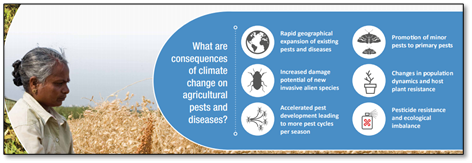
- Impact: Invasive pests cost countries at least $70 billion annually and are one of the main drivers of biodiversity loss. It adversely impacts agricultural activities and thereby, the primary source of income for rural poor communities. The damage from plant pests leaves millions of people without enough food to eat.
- Recommendations:
- Preventive measures: Pest risk analysis, Surveillance and monitoring, international cooperation and information exchange, preventive pest-management practices
- Technological developments: nano fertilizers and pesticides, enhanced breeding for resistance, information sharing framework
- International co-operation: To make trade safe, it is important to implement international plant health standards and norms, such as those developed by the International Plant Protection Convention (IPCC) and FAO. The IPPC is a plant health treaty signed by over 180 countries.
https://www.icrisat.org/wp-content/uploads/2019/07/DST-ICRISAT-Center-of-Excellence_Mamatha1.pdf
Performance Grading Index
In News
The Education Ministry released the latest edition of the Performance Grading Index or PGI.
Performance of States
- Overall Score: In PGI 2019-20, no state or Union Territory could achieve the highest grade, that is Level I. Chandigarh, Punjab, Tamil Nadu, Andaman and Nicobar and Kerala have scored more than 90% and obtained Grade 1++ (or Level II), which makes them the best performing states. Only the UT of Ladakh has been placed in the lowest grade, that is Grade VII, because it was the first time it was assessed after it was carved out of Jammu and Kashmir in 2019.
- Access Domain: Andaman and Nicobar Islands, Lakshadweep and Punjab have shown improvement of 10 per cent or more in the ‘Access’ domain
- Infrastructure and Facilities Domain: Thirteen states and UTs have shown improvement by 10 per cent or more, while Andaman and Nicobar Islands and Odisha have improved their scores in the domain by 20 per cent or more.
- Equity Domain: In ‘Equity’, Arunachal Pradesh, Manipur and Odisha have shown an improvement of more than 10 per cent.
- Governance Process Domain: In ‘Governance Process’, 19 states have shown improvement by 10 per cent or more. Andaman and Nicobar Islands, Andhra Pradesh, Arunachal Pradesh, Manipur, Punjab, Rajasthan and West Bengal have shown improvement by at least 20%
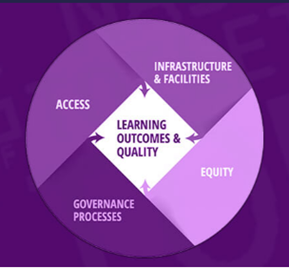
About the Performance Grading Index (PGI)
- Vision: First published in 2019 with reference year 2017-18, the index aims to drive states to undertake multi-pronged interventions for optimal education outcomes. The PGI helps the States/UTs to pinpoint the gaps and accordingly prioritise areas for intervention.
- Data collection mechanism: It is based on data drawn from several sources, including the Unified District Information System for Education Plus, National Achievement Survey, and Mid-Day Meal.
- Categorisation: States are scored on a total of 1,000 points across 70 parameters, which are grouped under five broad categories:
- access (eg. enrolment ratio, transition rate and retention rate)
- governance and management
- infrastructure
- equity (difference in performance between scheduled caste students and general category students)
- learning outcomes (average score in mathematics, science, languages, and social science)
- Levels: The PGI grading system has 10 levels. Level 1 indicates top-notch performance and a score between 951 and 1,000 points. Level II, also known as Grade 1++, indicates a score between 901 and 950. Those with Grade 1+ (or Level III) have scored between 851 and 900. The lowest is Grade VII, and it means a score between 0 and 550 points.
- Graded, not ranked: States are graded and not ranked to discourage the practice of one improving only at the cost of others, “thereby casting a stigma of underperformance on the latter”.
Ethanol Blending
In News
The government has brought forward the target date for achieving 20 per cent ethanol-blending with petrol by two years to 2023 to help reduce India’s dependence on costly oil imports.
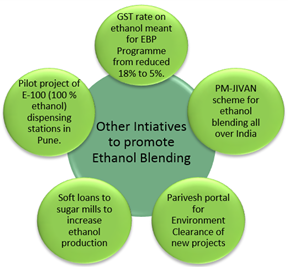
About the News
- The Ministry of Petroleum and Natural Gas directed oil marketing companies to sell ‘Ethanol Blended Petrol” with percentage of ethanol up to 20 per cent, with effect from April 1, 2023.
- Currently, petrol with 10% ethanol blend (E10) is being retailed by various Oil Marketing Companies (OMCs) in India, wherever it is available. However, as sufficient quantity of ethanol is not available, therefore, only around 50% of petrol sold is E10 blended, while remaining is unblended petrol (E0).
- The specifications of E20 as a commercial fuel have been indicated in IS: 17021: 2018 by BIS.
- The sugar industry will divert 6 million tonnes of surplus sugar to produce the ethanol needed, while the remaining ethanol will be produced from excess grain.
- The Centre has also recently amended the Sugarcane (Control) Order, 1966 by allowing the setting up of a unit exclusively to produce ethanol, to encourage ethanol production in the country.
- The report ‘Roadmap for ethanol blending in India 2020-25’ has been prepared by the NITI Aayog in collaboration with the Ministry of Petroleum and Natural Gas to suggest steps for production and supply of ethanol blended petrol.
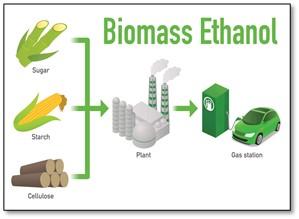
What is Ethanol Blending?
- Ethanol (CH3CH2OH) is a renewable fuel that can be made from various plant materials, collectively known as “biomass.” Ethanol is naturally produced by the fermentation of sugars by yeasts or via petrochemical processes such as ethylene hydration.
- When blended into gasoline, ethanol significantly raises the octane and vapor pressure.
- Department of Food and Public Distribution (DFPD) is the nodal department for promotion of fuel grade ethanol producing distilleries in the country.
- National Policy on Biofuels, 2018 has categorized First (IG) and Second Generation (2G) ethanol, as one of Basic Biofuels, apart from Municipal Solid Waste (MSW) to drop-in fuels, Third Generation (3G) biofuels, bio-CNG, to enable extension of appropriate financial and fiscal incentives.
- Government has allowed ethanol production/ procurement from sugarcane-based raw materials viz. C & B heavy molasses, sugarcane juice / sugar / sugar syrup, surplus rice with Food Corporation of India (FCI) and Maize.
Why advancing Ethanol blending deadline is a step in the right direction?
- Increasing consumption of transportation fuels: Transportation fuel is a large part of our total energy consumption. The energy demand in our country is rising due to an expanding economy, growing population, increasing urbanization, evolving lifestyles and rising spending power. Domestic biofuels provide a strategic opportunity to the country, as they reduce the nation’s dependence on imported fossil fuels.
- Import and Geo-political dependence: The foreign exchange payout towards these imports in financial year 2019-2020 was three times our defence outlay and 1.75 times the provision for annual interest payment on debt. From the geo-political perspective too, this scenario can prove perilous since India relies on the Gulf and West Asian countries for 65 per cent of the imports of fuel. In light of the political instability in this region, we might face severe irregularities in supply.
- Social and environmental hazards: Heavy use of fossil fuels has increased the levels of toxic gases like carbon dioxide, ozone, sulphate, formaldehyde and benzene in the air. These emissions can adversely affect photosynthesis which leads to a decline in agricultural yield. Pollutants cause pneumonia, asthma, throat and eye irritation, disorders of the lungs, heart and brain, and even cancer.
- Benefits for Sugar industry: India produces 60 lac tons of surplus sugar. However, rising prices of sugar cane and storage overheads put considerable pressure on margins of sugar manufacturing units. The Centre aims to encourage sugarcane diversion to ethanol production by raising the price of ethanol extracted from sugarcane juice.
- Employment generation and Alternate source of income: The government aims to step up the size of the Ethanol-based economy from Rs 20,000 crore to 2 lac crores. This entire movement will also help in bringing employment and revenue generation in rural India and preventing migration to cities. Also, Ethanol extracted from sugarcane as well as damaged food grains such as wheat and broken rice and agriculture waste will provide farmers with an alternate source of income.
Associated challenges
- Inefficient water usage: Water footprint, that is water required to produce a litre of ethanol, includes rainwater at the root zone used by ethanol-producing plants such as sugarcane, and surface, ground water, and fresh water required to wash away pollutants. India’s water footprint is not only high in overall terms, but India also uses more surface and ground water than the US and Brazil. India has the least internal surface and ground water compared with both countries.
- Challenges to Ethanol Producers: These range from ensuring availability of sufficient feedstock on a sustainable basis, problem of inter-state movement of ethanol from surplus to deficient states due to non-implementation of the Industrial Development Regulation Act, which allows smooth movement of ethanol, and weather-related issues like floods / drought affecting the crop.
- Challenges to Vehicle Manufacturers: Manufacturers will need to guide vendors to develop ethanol compatible parts, work on optimization of engine for higher ethanol blends and conduct durability studies on engines and field trials before introducing E20 compliant vehicles.
- Environment Clearances: Currently, ethanol production plants/distilleries fall under the “Red category” and require environmental clearance under the Air and Water Acts for new and expansion projects. This often takes a long time leading to delays.
- Regional mismatch: Ethanol is not produced or available in some states for blending with gasoline. Ethanol blending has not been taken up in North-East states due to non-availability of feedstock or industries. Transport of ethanol to different places for blending will increase the cost of logistics and transport related emissions.
Way Forward
- Phased rollout of higher ethanol blends starting with the states having surplus ethanol production and notify all the stakeholders. A system for single window clearances may be formulated by DPIIT to accord speedy clearances for new and expansion projects for ethanol production.
- In view of the switch of dispensing of EBP fuels between E10 and E20 (such as E12 or E15) as well in manufacturing compatible vehicles, intermediate blends like E12 and E15, can give flexibility to OMCs to manage supply and demand of ethanol in the country. Flex fuel vehicles can also be encouraged and popularized for moving to higher blends.
- A nation-wide educational campaign should be launched jointly by MoP&NG through its OMCs, MoRT&H in partnership with the industry to educate the consumers of the benefits of EBP, and to select the correct fuel for their class of vehicles.
Question: Analyse the need for Ethanol blending programme in India. What are the challenges in achieving the ethanol blending goals of India?
Primary Sources: https://www.thehindubusinessline.com/economy/agri-business/govt-brings-forward-to-2023-the-target-for-20-per-cent-ethanol-blending/article34717728.ece
https://indianexpress.com/article/india/petrol-ethanol-blending-2023-7341492/
https://mopng.gov.in/files/uploads/Ethanol_blending_in_India_(7).pdf
Secondary sources: https://www.livemint.com/industry/energy/india-brings-forward-by-two-years-20-ethanol-blend-to-gasoline-11622665338223.html
This Day in History- First International Flight
On June 8, 1948, India’s national air carrier, Air India, flew its maiden international flight, called the VT-CQP Malabar Princess, from Mumbai to London via Cairo and Geneva. The plane took off on June 8, 1948, and landed two days later on June 10, 1948, in London with 35 passengers on board including JRD Tata and Nawab Amir Ali Khan of Jamnagar among others. The plane was piloted by Captain K R Guzdar and was a 40-seater Lockheed Martin L-749 Constellation aircraft.

Image of the Day- Sea Snot
This is image of the ‘sea snot’ outbreak in Turkey's Sea of Marmara to the south of Istanbul, posing a threat to marine life and the fishing industry. Sea of Marmara, that connects the Black Sea to the Aegean Sea, has witnessed the largest outbreak of ‘sea snot’. ‘Sea snot’ is marine mucilage that is formed when algae are overloaded with nutrients as a result of water pollution combined with the effects of climate change. The nutrient overload occurs when algae feast on warm weather caused by global warming. Water pollution adds to the problem. Environmental experts have said that overproduction of phytoplankton caused by climate change and the uncontrolled dumping of household and industrial waste into the seas has led to the present crisis.
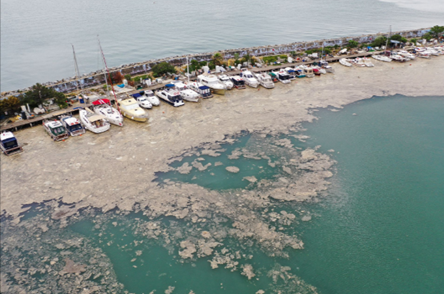
Asia-Pacific Economic Cooperation
- Context: APEC leaders’ online meeting.
- The Asia-Pacific Economic Cooperation (APEC) is a regional economic forum established in 1989 to leverage the growing interdependence of the Asia-Pacific region. It has 21 members.
- The members aim to create greater prosperity for the people of the region by promoting balanced, inclusive, sustainable, innovative, and secure growth and by accelerating regional economic integration.
- Members facilitate this trade through faster customs procedures at borders; more favourable business climates behind the border; and aligning regulations and standards across the region.
- The forum adapts to allow members to deal with important new challenges that include ensuring disaster resilience, planning for pandemics, and addressing terrorism.
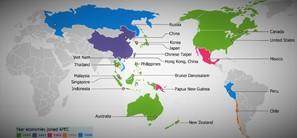
Primary source: https://www.apec.org/about-us/about-apec
Software Technology Park of India (STPI)
Context: STPI has decided to establish 12 Centres of Excellence in healthcare, Internet of Things, Smart Agri, etc.
- Software Technology Parks of India (STPI) is a premier S&T organization under Ministry of Electronics and Information Technology (MeitY) which was set up in 1991.
- It is engaged in promoting IT/ITES Industry, innovation, R&D, start-ups, product/IP creation in the field of emerging technologies like Internet of Things, Blockchain, Artificial Intelligence (AI), Machine Learning (ML), Robotics, etc.
.jpg)
Primary source: https://www.stpi.in/about-stpi
Picture source: https://www.quora.com/What-is-the-difference-between-technology-and-software
Corbevax
- Context: India has placed an advance order to block 300 million doses of new Covid-19 vaccine, Corbevax, from Hyderabad-based Company Biological E.
- It is India’s indigenous Covid-19 vaccine, currently undergoing Phase 3 clinical trials.
- Corbevax is a “recombinant protein sub-unit” vaccine, which means it is made up of a specific part of SARS-CoV-2 -the spike protein on the virus’s surface.
- Like most other Covid-19 vaccines, Corbevax is administered in two doses and will be among the cheapest available in the country.

Primary source: https://indianexpress.com/article/explained/corbevax-vaccine-biological-e-india-7344928/
Picture Source: https://www.livehindustan.com/national/story-corbevax-may-be-india-s-cheapest-vaccine-cost-of-2-doses-rs-500-4093625.html
United Nations Global Compact’s CEO Water Mandate
- Context: NTPC Ltd has become a signatory to the prestigious UN Global Compact’s CEO Water Mandate.
- The UN Global Compact’s CEO Water Mandate was formed in 2007 to mobilize business leaders to advance water stewardship, sanitation, and the Sustainable Development Goals in partnership with the United Nations, governments, peers, civil society, and others.
- The Mandate develops tools and resources, convenes stakeholders, and facilitates meaningful partnerships and on-the-ground collective actions that improve conditions in at-risk river basins around the world.
- It handles a variety of issues concerning climate-water nexus, WASH, human rights, etc.

For India, G-7 is an opportunity to expand ties with West- IE
Essence: In this editorial, Mr. C Rajamohan explains the difference in India’s alignment with west & east. And how with time we have find partnership with west deeper than China, whom India once regarded as a necessary partner for multipolar world order. This week’s G-7 summit is an opportunity to expand the global dimension of India’s growing partnerships with the US and Europe. The challenges from an increasingly aggressive China, the urgency of mitigating climate change, and the construction of a post-pandemic international order are generating an unprecedented convergence between the interests of India and the West. Britain PM Boris Johnson wants to build a coalition of leading democracies to “help fight and build back better from the coronavirus and create a greener and more prosperous future”. The idea of a global democratic coalition that is based more broadly than the geographic West has gained ground in recent years. And India is at the very heart of that Western calculus.
Why you should read this article?
- To know about key agendas of upcoming G-7 summit.
- It is providing insights on India’s policy decisions with respect to RCEP, Bilateral engagements, QUAD, G7, etc., which reflect balancing between East & West.
- To gain understanding on diverse issues which make Indian & western interests coinciding with each other.
Article Link: https://indianexpress.com/article/opinion/columns/g-7-virtual-meet-united-kingdom-india-and-the-west-relations-7348541/
Belligerence and pushback
Essence: In May, in another brazen display of its ‘wolf warrior’ diplomacy, China, while suggesting the Quad to be a minor anti-China initiative, warned Dhaka that there will be “substantial damage” in bilateral ties between China and Bangladesh if the latter joins the Quad. In this context, this article highlights China’s belligerent attitude and it’s failure towards rising momentum of Quad and response from many regional states in South Asia and the Indo-Pacific.
Why should you read this article?
- Know about China’s attempts to play down the relevance of the Quad.
- Have a brief overview of the emerging fault lines in South Asia and the wider Indo-Pacific in the context of Quad’s future role and China’s aggressive diplomacy.
Article Link: https://www.thehindu.com/todays-paper/tp-opinion/belligerence-and-pushback/article34757064.ece
Satyendra Dube: An example of commendable dedication and work ethics.
Know about Satyendra Dube:
- An Indian Engineering Services officer, he was project director in the National Highways Authority of India in Jharkhand, working on the Golden Quadrilateral Project.
- He showed extra ordinary courage in exposing serious financial irregularities and exposed many corrupt practices in the industry.
- He also made many contractors rebuild the poor-quality roads. He wrote a letter to Former Prime Minister to expose the corruption and financial irregularities in the project.
Outcome:
- Besides inspiring others to show the same degree of courage, it even strengthened the call for greater probity in public life with the enactment of the Right to Information Act in 2005, and Whistle-blowers Protection Act in May 2014.
Values shown by Satyendra Dube:
- Fortitude, Integrity, Financial Propriety, Leadership, Dedication to Duty.
Share the article
Get Latest Updates on Offers, Event dates, and free Mentorship sessions.

Get in touch with our Expert Academic Counsellors 👋
FAQs
UPSC Daily Current Affairs focuses on learning current events on a daily basis. An aspirant needs to study regular and updated information about current events, news, and relevant topics that are important for UPSC aspirants. It covers national and international affairs, government policies, socio-economic issues, science and technology advancements, and more.
UPSC Daily Current Affairs provides aspirants with a concise and comprehensive overview of the latest happenings and developments across various fields. It helps aspirants stay updated with current affairs and provides them with valuable insights and analysis, which are essential for answering questions in the UPSC examinations. It enhances their knowledge, analytical skills, and ability to connect current affairs with the UPSC syllabus.
UPSC Daily Current Affairs covers a wide range of topics, including politics, economics, science and technology, environment, social issues, governance, international relations, and more. It offers news summaries, in-depth analyses, editorials, opinion pieces, and relevant study materials. It also provides practice questions and quizzes to help aspirants test their understanding of current affairs.
Edukemy's UPSC Daily Current Affairs can be accessed through:
- UPSC Daily Current Affairs can be accessed through Current Affairs tab at the top of the Main Page of Edukemy.
- Edukemy Mobile app: The Daily Current Affairs can also be access through Edukemy Mobile App.
- Social media: Follow Edukemy’s official social media accounts or pages that provide UPSC Daily Current Affairs updates, including Facebook, Twitter, or Telegram channels.

